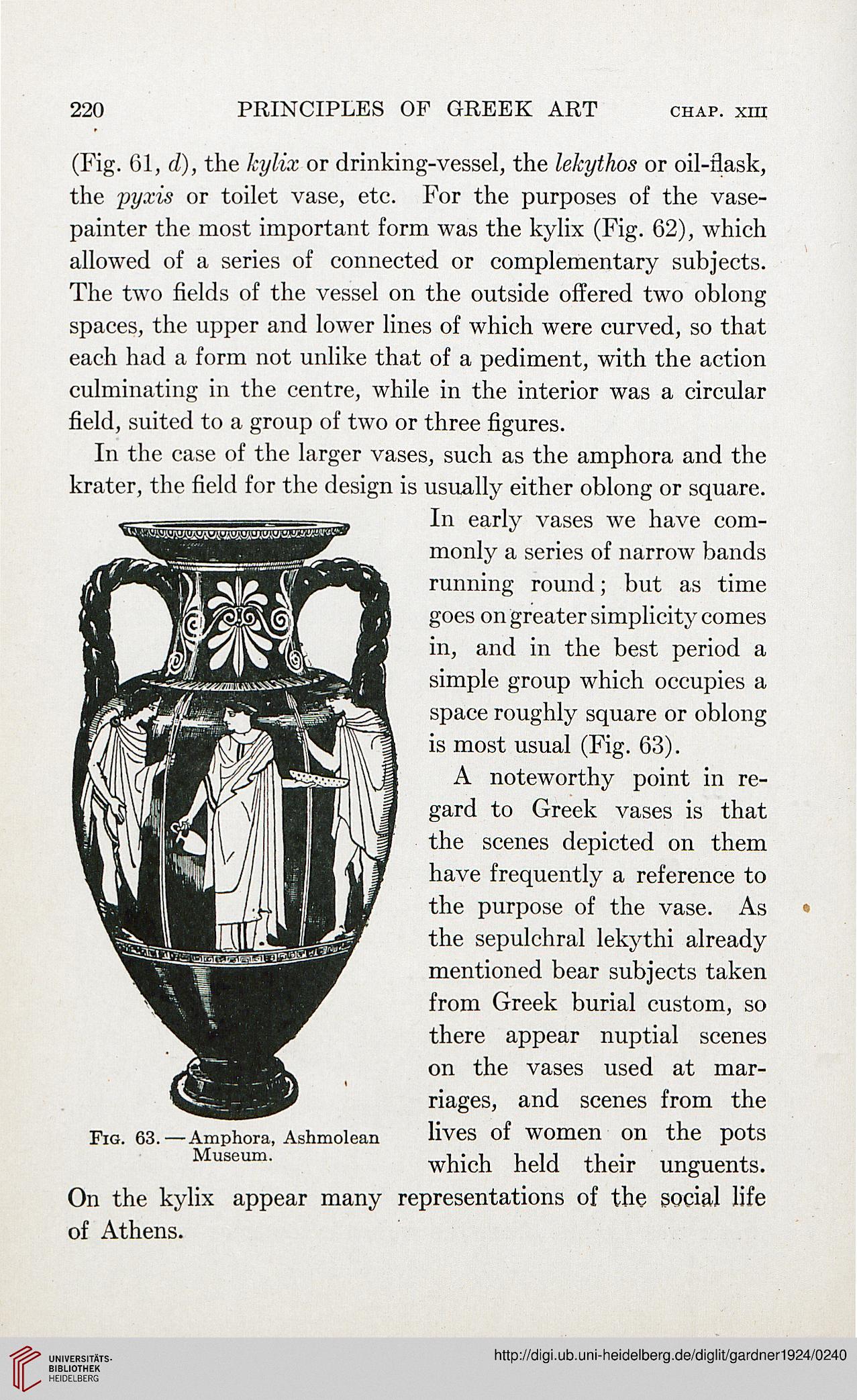220
PRINCIPLES OF GREEK ART chap, xiii
(Fig. 61, d), the kylix or drinking-vessel, the lekythos or oil-flask,
the pyxis or toilet vase, etc. For the purposes of the vase-
painter the most important form was the kylix (Fig. 62), which
allowed of a series of connected or complementary subjects.
The two fields of the vessel on the outside offered two oblong
spaces, the upper and lower lines of which were curved, so that
each had a form not unlike that of a pediment, with the action
culminating in the centre, while in the interior was a circular
field, suited to a group of two or three figures.
In the case of the larger vases, such as the amphora and the
krater, the field for the design is usually either oblong or square.
In early vases we have com-
monly a series of narrow bands
running round; but as time
goes on greater simplicity comes
in, and in the best period a
simple group which occupies a
space roughly square or oblong
is most usual (Fig. 63).
A noteworthy point in re-
gard to Greek vases is that
the scenes depicted on them
have frequently a reference to
the purpose of the vase. As •
the sepulchral lekythi already
mentioned bear subjects taken
from Greek burial custom, so
there appear nuptial scenes
on the vases used at mar-
riages, and scenes from the
Fig. 63.— Amphora, Ashmolean lives of Women on the pots
Museum. which ^ thejr unguents_
On the kylix appear many representations of the social life
of Athens.
PRINCIPLES OF GREEK ART chap, xiii
(Fig. 61, d), the kylix or drinking-vessel, the lekythos or oil-flask,
the pyxis or toilet vase, etc. For the purposes of the vase-
painter the most important form was the kylix (Fig. 62), which
allowed of a series of connected or complementary subjects.
The two fields of the vessel on the outside offered two oblong
spaces, the upper and lower lines of which were curved, so that
each had a form not unlike that of a pediment, with the action
culminating in the centre, while in the interior was a circular
field, suited to a group of two or three figures.
In the case of the larger vases, such as the amphora and the
krater, the field for the design is usually either oblong or square.
In early vases we have com-
monly a series of narrow bands
running round; but as time
goes on greater simplicity comes
in, and in the best period a
simple group which occupies a
space roughly square or oblong
is most usual (Fig. 63).
A noteworthy point in re-
gard to Greek vases is that
the scenes depicted on them
have frequently a reference to
the purpose of the vase. As •
the sepulchral lekythi already
mentioned bear subjects taken
from Greek burial custom, so
there appear nuptial scenes
on the vases used at mar-
riages, and scenes from the
Fig. 63.— Amphora, Ashmolean lives of Women on the pots
Museum. which ^ thejr unguents_
On the kylix appear many representations of the social life
of Athens.




